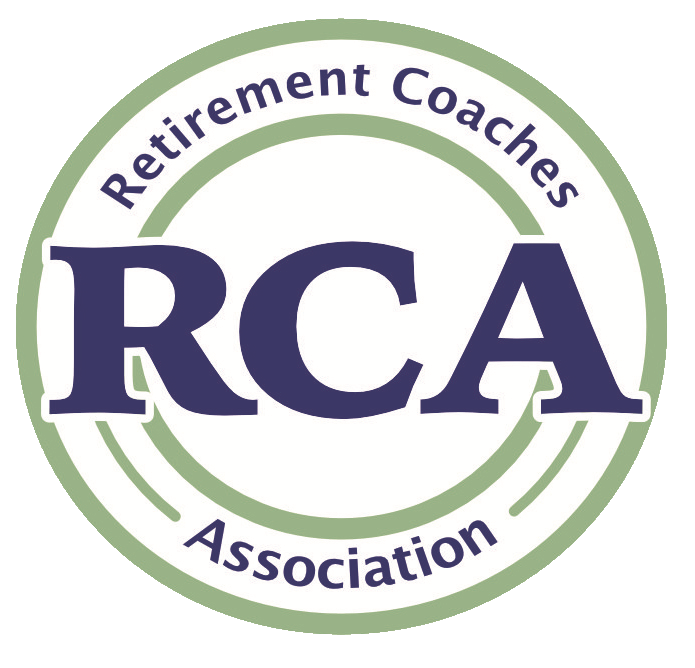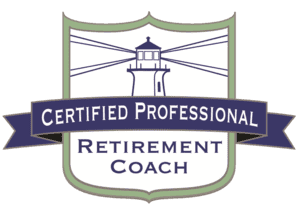More than a decade ago in the midst of our company’s huge growth curve, where day-to-day survival was paramount to success, my Chairman/CEO asked me a simple question about how I would leave a legacy: “Bob, what’s your plan to prepare for your successor once you decide to hang it up?”
Hang it up?
We’re in the middle of a huge growth curve and you are wondering about succession?? I have no time for that. I need to focus on today so there is a tomorrow.
“Today” is the prevailing mindset in Corporate America, especially among the Boomer generation, just as it was with mine years ago. The difference with my experience was that my CEO continued to nudge me and challenge me to think about how—not when—I was going to transition from my Chief HR role in a company with over 8,000 employees and leave a legacy.
Thus began the five-year process we would put in place to accomplish a smooth transition for all involved. Not only was it smooth but it taught me a great lesson in humility, self-worth, and wisdom. It made me stop and think:
- Why was I being so selfish?
- Why was I so reluctant to let go?
- Why could I not accept the fact that it was time for me to leave a legacy and get on with my next stage in life?
The answer: It was fear, anxiety, denial, guilt and good old-fashioned ego! How would they ever get along without me really was how would I ever get along without being the CHRO?
You see, my biggest fear was losing my 35+ year work identity. I was captivated by my “C Level” success working for household-named companies and billion dollar corporations.
The “Personal Identity Trap”
You get so consumed by your job status that it becomes your total persona and it does not let you be you. We Baby Boomers love to wallow in it as it is warm, safe and gives us our purpose in life. When we do not realize it is time to step aside, we run the danger of losing our position in a most difficult and intense way, both for us (the executive) and the company.
Nobody wins and it tarnishes the executive’s legacy.
With that as a backdrop, I had to first get used to the fact that at some point I would need to leave corporate life—a life I occupied since I was 27 when The Sheraton Corporation hired me as Manager of Staffing for the North American Division. So beginning to think about voluntarily transitioning was a very scary and foreign thought process.
Finally, nine months later, after going through all the emotional stages and arriving at acceptance, I put together my plan about how to leave a legacy. First, I enlisted my CEO to be my only confidant and mentor in this very delicate process. We discussed the essentials of the job as Head of an HR function for 10,000 souls projecting five years hence and what strategies would need to go into place as we streamed up to my departure day. What we did not know then was how timely this preparation period would be.
Life has a way of delivering curve balls when you least expect it. More on that later.
Putting the transition plan in motion.
With the plan roughed out, we knew what HR strategies and tactics had to be put in place, but now we had to figure who would become my heir apparent without it being obvious. So we went from abstract to real. I began the process of creating a five portal proprietary HR internet system, documenting all of our HR processes so that with continued expansion, the HR function would have the ability to plug and play our HR specific and proprietary way of doing things into any hotel that was acquired.
In effect, we were setting up a tactical interface that would not only free up my replacement to oversee the day-to-day, but also give them time to be strategic in their vision for the next ten years. This would be a five-year journey and the “chosen one” would have to work right beside me the whole way so they owned it as much as we did.
The “knowledge transfer” was the most important part of this transition.
That action is the most important part of a healthy transition and, today only about 30% of my colleagues have done so. We had to understand we were a “succession team” without taking our eye off the day-to-day adventure.
But who would we choose? Do we go with someone internally that has a generalist HR background? Do we go outside for an experienced HR generalist, an almost-peer if you will, who could help us traditionally shape everything?
Or, as my CEO finally brought us around to, do we find a bright and talented HR generalist who could take our solid-but-traditional framework and tweak it to be cutting-edge as we evolved our thought process in the Talent Czar project?
We (my CEO and I) jointly decided to go bold. We went female, bright and hungry. The biggest obstacle we had to overcome in our thought process was not how the world looked today, but how it would look five to eight years from then. Cue the Millennial, Caroline Warren from the Hard Rock Hotel in Chicago, who committed to spending the ramp-up time with me and would commit to then staying at least ten years after I left, and also would begin the same transition process as I did.
For today’s Millennial, that was a big commitment, and a unique challenge for me in that I had to keep her feeling engaged and innovative while I had to understand and support her thought process, all the while giving her nuggets of wisdom to consider.
So we began and built besthotelcareers.com along with talentczar.com which housed everything HR from A to Z. I was the architect and drew the lines, she would build out the structures, beta test them and then roll them out. We would meet daily for a half-hour no matter what to discuss our progress and then go back to the real world and do our daily jobs.
As time went on, she brought in a creative multi-media type to help make the site more functional and appealing. While at the same time teaching him all she knew about HR so he could now be her muse as she was to me on this project. Again, she chose someone savvy, hungry, and smart who was fully engaged in the continuing process.
By the way, I was still the Chief HR Officer at this point. I have to admit from time to time my ego would get in the way but the strength of our working relationship would allow Caroline to nicely nudge me out of my “I’m in charge bias” to “interesting thought let’s try it”.
Meeting life’s challenges.
Things started to happen in my life five years into our working relationship. I ended up with a rare medical condition that put me on a leave of absence for three months and Caroline took over like a champ. No significant difference was noticed. She then had her first child upon my return and then twins a few years later. During those periods I had to pick up her duties as she picked up mine when I was absent. But my moment of clarity came when it was time for me to move on when two things occurred. Caroline was ready to lead and I needed to take care of my cancer- stricken wife who sadly did not survive.
That is the moment of truth. It all comes to us senior executives and usually revolves around events beyond our control like health issues, interpersonal conflicts with Board Members or other Senior Executives, an economy that has us confused or, sadly, a home-centric personal issue.
The thing is it is how we deal with it.
Do we accept the fact that it is time to be truthfully introspective and consider how to leave a legacy, or do we just ignore and soldier on right over the cliff? I was lucky the succession apparatus that my CEO helped me to put in place shored up what had to happen.
During my periods of work absence to be my wife’s caregiver, driver, and supporter, Caroline simply assumed my role and we stayed in constant contact with me as coach and she as Leader. Upon my return from my time as caregiver, I let Caroline and my CEO know of my intent to leave the company in six months. With that in mind, we promoted two very capable field HR executives and reorganized for life with Caroline sans Bob.
The only unforeseen circumstance happened when Caroline, as before mentioned, became pregnant with twins, but the reorganization was in place. The new team stepped up with the both of us absent due to the strength of the output of our five-year plan in place and the tremendous supervisory help from the company’s COO Jim Dina who always strongly supported the HR function before, then, and now. This is a very important succession consideration.
What happens when things happen that are unforeseen?
You must plan for the unforeseen and designate two individuals as backups or buy into the concept of bringing in an interim executive. Either will work; it just depends on the position and the culture of the company.
Upon Caroline’s return, the plan had done its job and, good thing, as the company is now going through another huge growth phase, while HR survives and thrives due to both the people involved and the plan. Caroline is waiting for that question from the CEO that came to me ten years ago and she has all sorts of ideas.
The transition from Boomer to Millennial happened in an orderly and friendly way with no ripples on the water. I stayed on as a consultant to the company and to this day, still provide high performance leadership training to each hotel’s new senior management leaders. Caroline and I still have those half-hour blue sky sessions, but now only once a month because that’s about all she needs as it is her vision and legacy now.
That’s the core element in this transition: I had to willingly relinquish my Leadership and Strategic role and give Caroline the room to develop the new thought process. This transition succeeded because it evolved in steps that spoke to the times and we empowered Caroline to set things up as she needed to, while I continued to lead and endorse her vision. This process gave me the comfort to relinquish and she the confidence to take over. All done while a dynamic and hard charging organization had to transition its business model (due to the economics of the times), acquire and relinquish certain hotel assets, and operate the business on a daily and in a challenging way.
This transition was all done in the flow of daily life not as an academic exercise off to the side, but front and center as things occurred.
On December 30th Caroline came to work as the SVP of Human Resources and I stayed home to start my new consulting career as CEO of 360 Talent Advisors with Pyramid Hotel Group as my first client. Mission Accomplished!!
Final Thoughts
If you can’t see yourself in retirement, that’s because the retirement you’ve been imagining isn’t one that was created just for you. It’s time to update your beliefs about what retirement can be, so you can curate a retirement lifestyle that’s customized just for you, in all your vitality and uniqueness.
Bob Foley is your Retirement Lifestyle Coach and you can reach him by email at bob@retirementlifestylecoach.com or simply by scheduling time on his calendar here.




